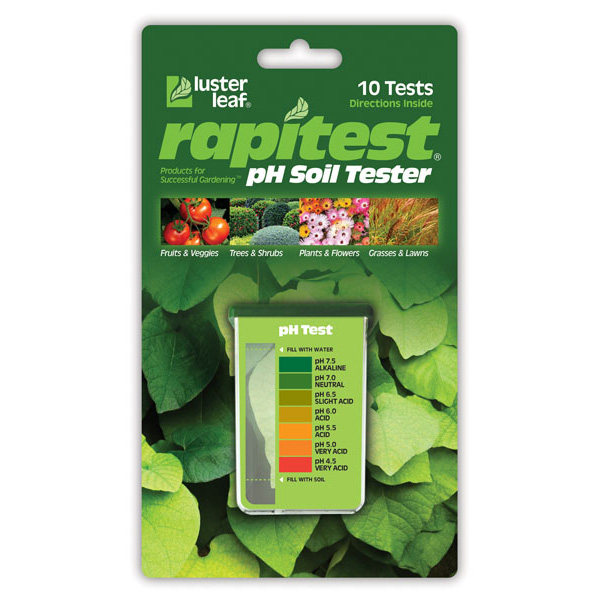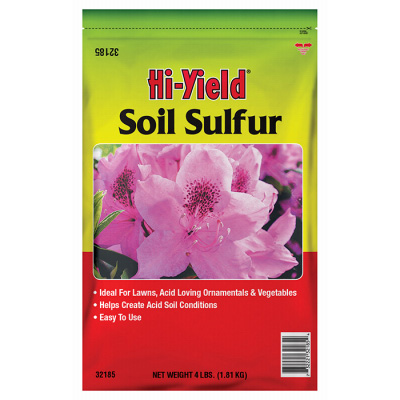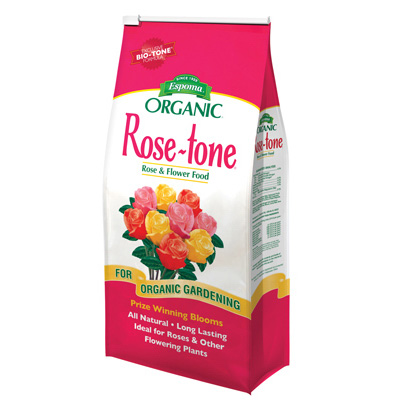Rose Selection
Roses come in many various sizes and bloom types. Make sure to select a rose type that will fit your needs and space available. Here are some key varieties:
Generally more showy and fragrant varieties.
Hybrid Tea, Grandiflora, & Floribunda Roses
Shrub varieties have less spectacular blooms but rebloom more frequently and are lower maintenance.
Shrub Roses
Climbing Roses are perfect for arbors, fences, and trellises and are usually fragrant.
Climbing Roses
Planting
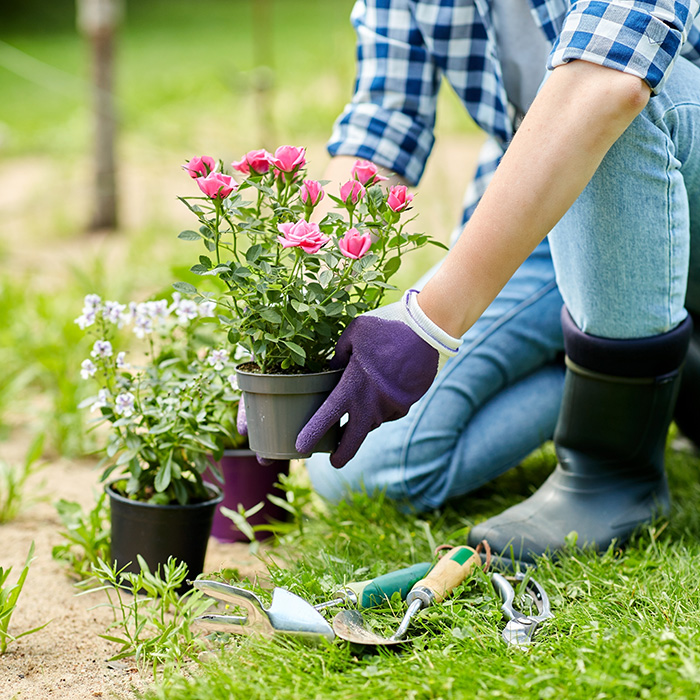
Most Rose varieties prefer afternoon sun (at least 6 hours)
The more sun, the better!
The best time to plant roses is in the spring, although they may be planted anytime during the growing season.
Be sure to space roses with enough room between them and the surrounding plants to allow air circulation and prevent disease. Amend soils with compost or manure at planting.
The KC Rose Society recommends that grafted roses be planted with the graft about 2” below the surface, while own-root roses be planted at the same soil level as the pot. Water during and after planting, fill in where soil may settle.
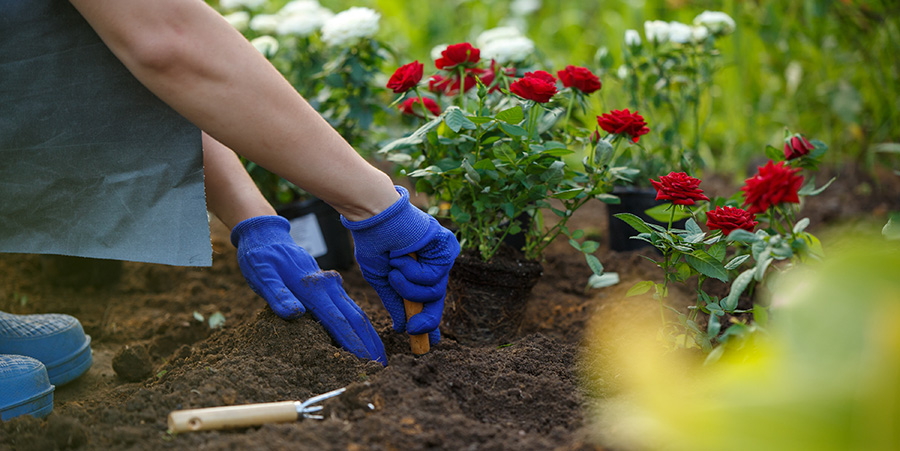
Watering
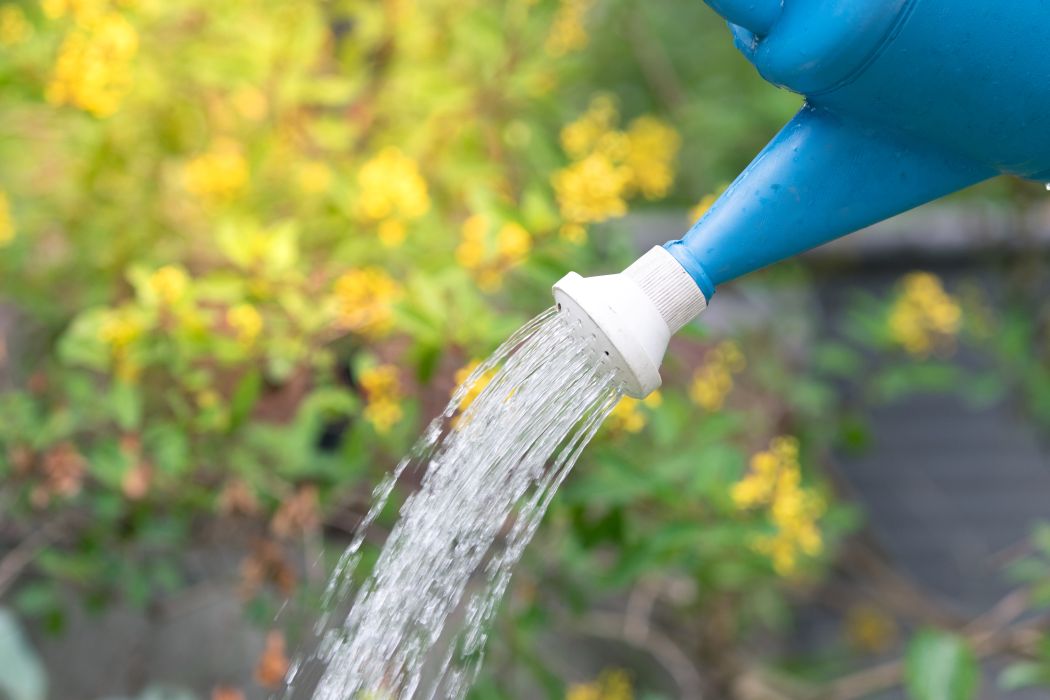
Proper watering is the most important factor in rose-growing success.
The key is to keep the soil moist around the base of the plant, but not soggy.
Water newly planted roses frequently (every 2-3 days).
Keep an eye on the blooms and foliage during prolonged hot/dry spells as wilting foliage and blooms may be a sign that the plant needs water.
Be sure not to water them overhead with a sprinkler; water slowly at the base of the plant long enough for the water to seep into the ground deeply (at least 1-2 gallons per plant).
During winter, remember that prolonged dry spells with no snow/rain are just as detrimental as summer drought. If a month goes by with no precipitation and the ground is dry, supplemental watering may be necessary on days above freezing.
Fertilizing
Kansas City area soils usually need to be acidified, but a soil test is recommended to determine whether or not you need to adjust pH. Gardeners can do this by adding organic matter (compost, manure, peat) or by using soil sulphur or a holly/azalea/hydrangea acidifier.
Roses should be fertilized beginning in April, following application instructions through August. For organic gardeners, Rose Tone works well; conventional fertilizers include Bayer All-In-One (with systemic insect & disease control and slow release fertilizer) and Hi-Yield Rose Fertilizer. Be sure to follow the included instructions for best results.
Do not overfertilize.
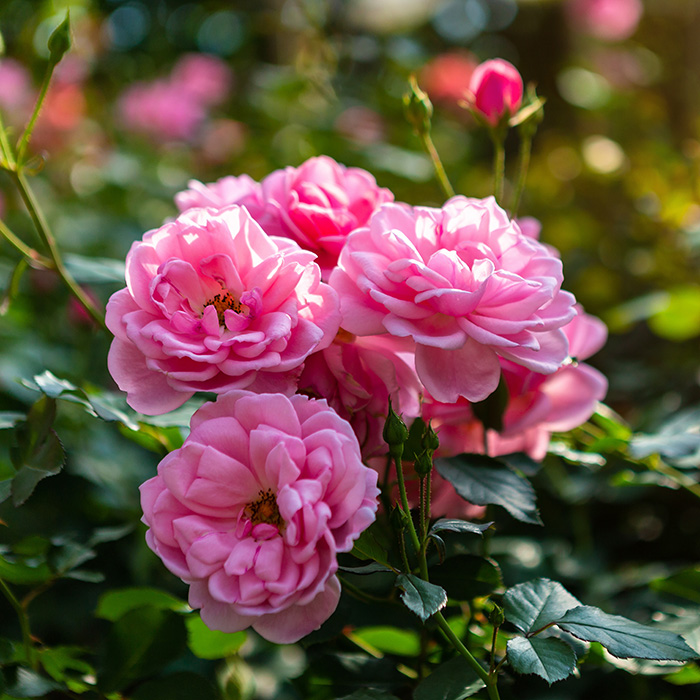
In order for roses to give their best show, it helps to feed them occasionally.
Care & Pruning
Prune roses in late March/early April to keep them an appropriate size and have a tidy form. Pruning will boost flower production, prevent disease, and remove winter damaged canes.
Remove winter mulch, prune any dead, damaged, or diseased growth at ground level, or below the damaged area. Any canes that are rubbing against each other also need to be removed. The KC Rose Society recommends thinning remaining canes out to 3-7 healthy stems by removing the oldest/woodiest and smallest/wimpiest ones.
Hybrid Tea, Grandiflora, and Floribunda roses can be cut down to 6-8” if needed (may cut back by half if in good form), and shrub types can be cut down by about half; Knockout and Drift Roses may be cut down to 12” to keep them under control and well shaped. Always cut live growth to an outward facing bud.
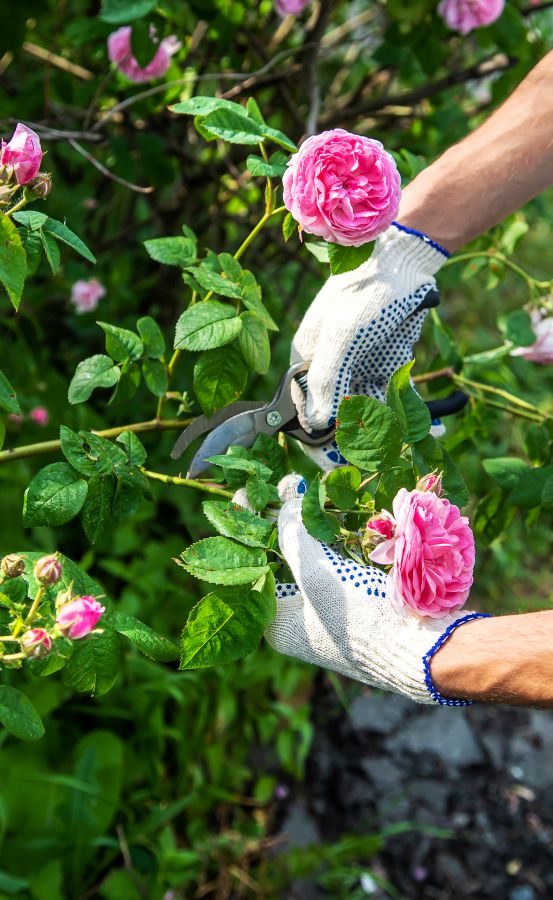
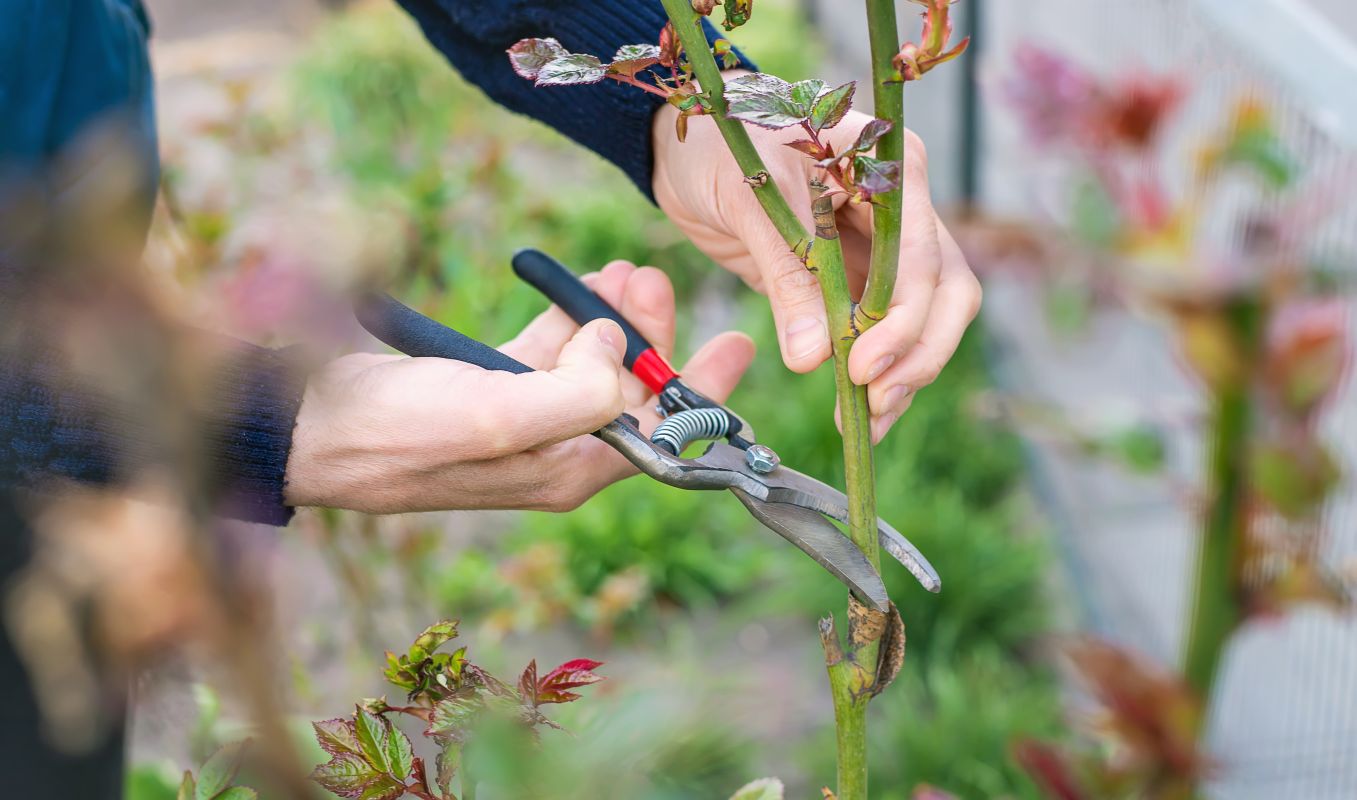
Climbing roses need to be thinned out every year to prevent overgrowth and crowding. In fall, after several hard frosts, remove any fallen rose foliage from the garden, and cover the base of the plant with mulch, compost, or leaves.
DO NOT USE ROSE CONES! They do not allow adequate airflow around the plant and it will become infected with fungal diseases.
Pest and Disease Control
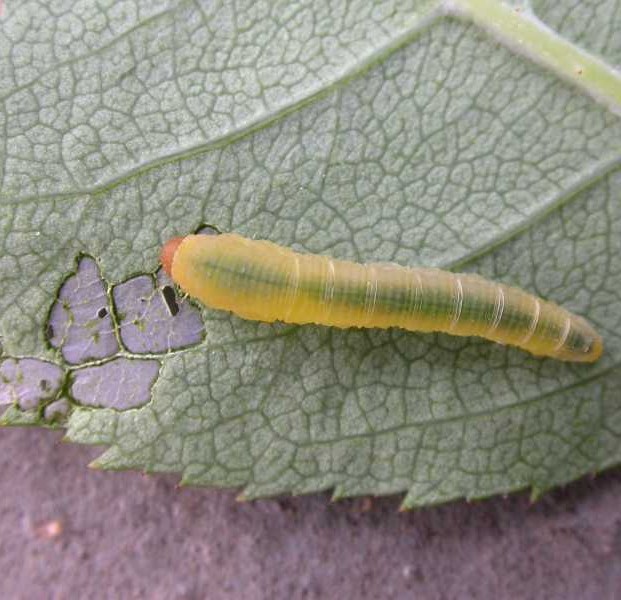
The most common rose pests are rose slugs/larvae (usually appear in June), thrips, and Japanese beetles (July-August). Sawfly larvae will skeletonize the foliage, leaving brown, papery leaves. Bayer All-In-One products have systematic pesticide & disease control , as well as slow release fertilizer.
Keep in mind that systemic insecticides may harm beneficial insects. Rose shield spray is also effective at controlling insect and disease problems with roses and other plants. For a more organic approach, neem oil may be used to control fungal diseases and active feeding insects.
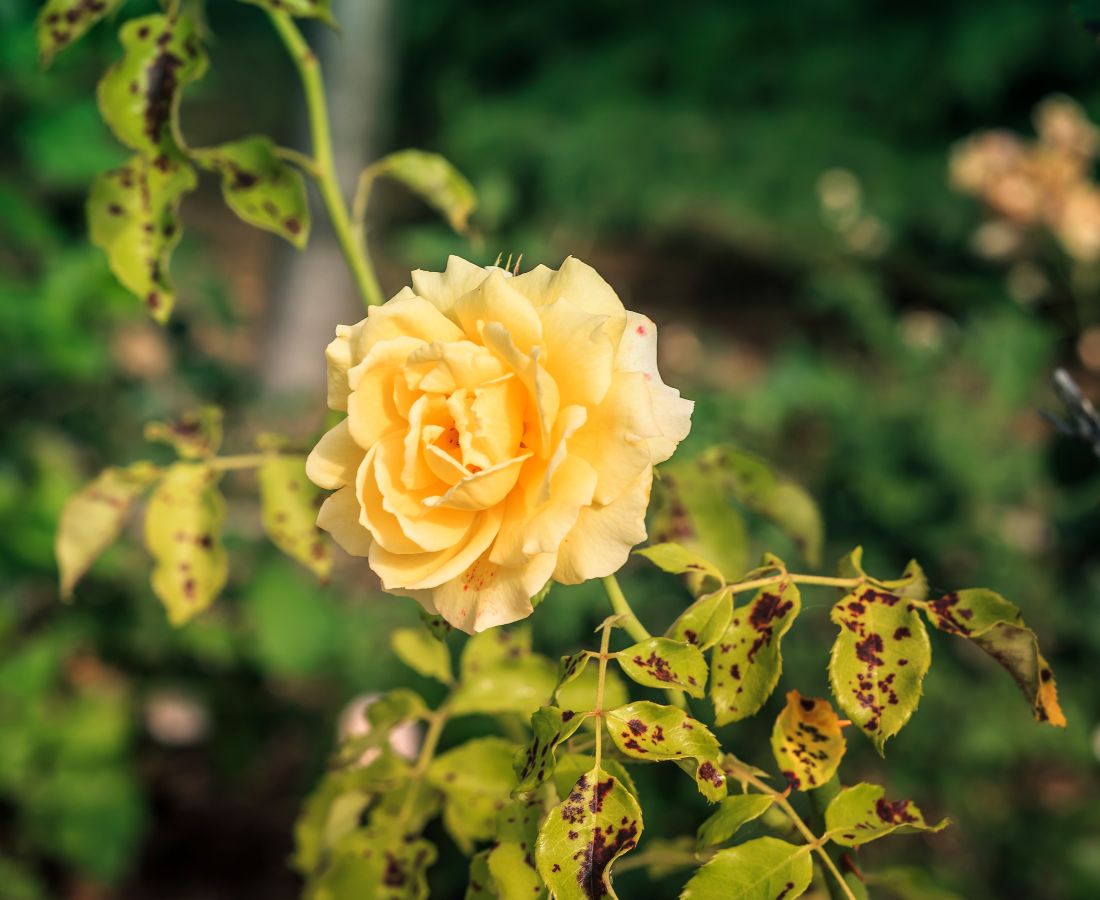
Black spot disease and powdery mildew are problematic in roses, and are best controlled through proper watering practices. Make sure roses get proper airflow around them, and ensure that they are not being watered by sprinklers.
Keep dead rose foliage from collecting at the base of the plant. If you find that you still have disease issues, any of the above products would be affective.
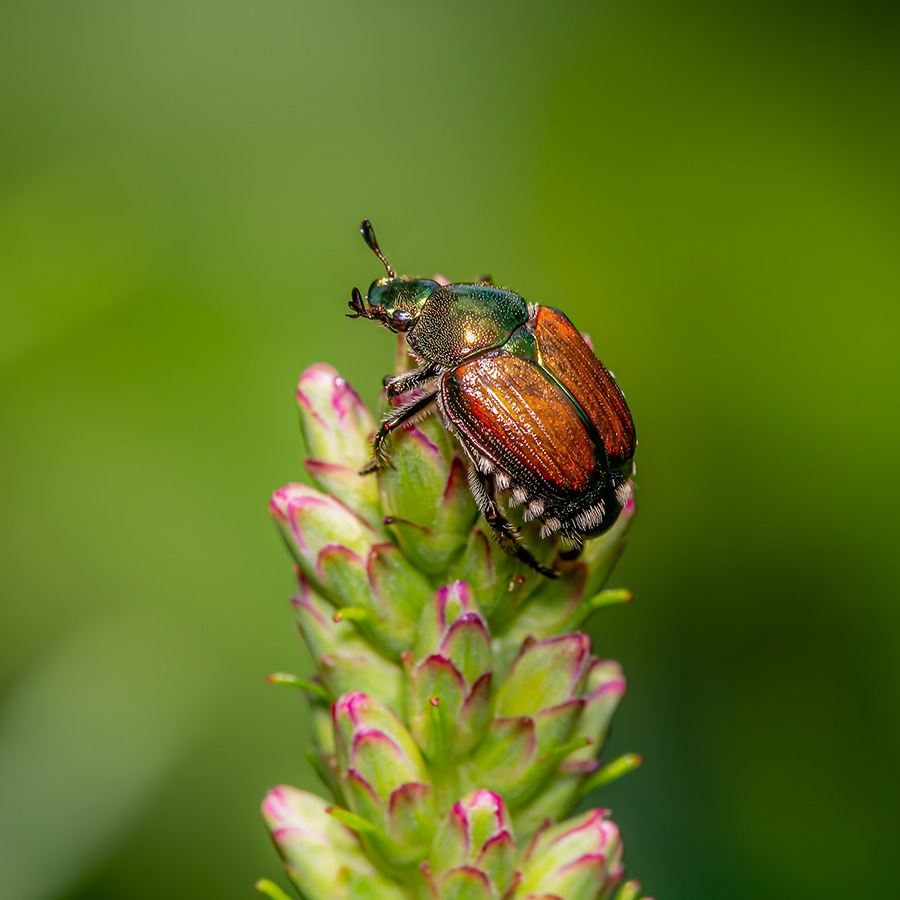
Japanese beetles appear during July and usually run their course by mid-August. Systemic insecticide (Imidicloprid) may be used, but there will still be damage.
Remove beetles by hand and place in a bucket of soapy water if you are trying to avoid chemicals. Beetle traps generally attract more beetles than they prevent, so use sparingly.

